
|
|
|
|||
The idea of making this purse originated with my study
of improving and enhancing the stiffness of knitted fabric
with lining and interfacing fabrics. |
|||
| SIZE | |||
One |
|||
| FINISHED MEASUREMENTS | |||
Height: approx. 7 inches |
|||
| MATERIALS | |||
Fabrics:
|
|||
| GAUGE | |||
28 sts/50 rows = 4 inches in beaded stockinette st pattern |
|||
|
PATTERN NOTES [Knitty's list of standard abbreviations and techniques can be found here.] |
|||
Directions for Judy's Magic Cast On can be found here. Pattern for fabric pieces Print pattern pieces A and B - each will fit on a single sheet of letter-sized paper. |
|||
| DIRECTIONS | |||
|
Print pattern pieces A and B. Tape together along the bold line as indicated, to produce a symmetrical pattern. The solid outer line indicates the cutting line; the dotted inner line indicates the seamline. Check the shape of the purse frame against the paper pattern; the frame should be the same shape as the upper edge of the seamline, between the edges of the purse opening. If necessary, adjust the shape of the pattern before cutting it out. Cut 2 pieces each from underlining fabric, lining fabric,
and interfacing, transfering the markings for the edges
of the purse opening. Step 2: Attach Interfacing and Underlining Step 3: Form Purse Body and Lining Fold corners of bag, pinching inner corners of gussets so that gusset edges meet; pin together. Sew gusset edges, using marked 3/8 inch seam allowance. Trim seam allowances along curved side edges, clipping every inch or so to reduce bulk and smooth curves. Turn right side out, checking to ensure that corners are turned properly and edges of opening are even. Press if necessary. Pin lining pieces together with right sides together, carefully matching edges. Sew together in the same way as the body panels. Do not turn right side out. Step 4: Attach Lining to Purse Body 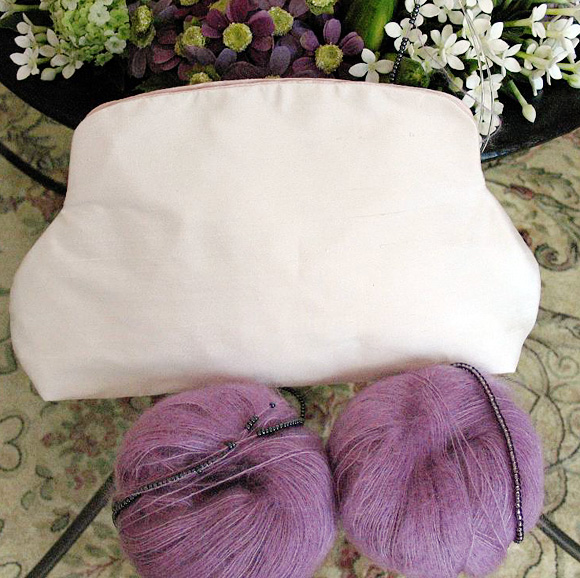
KNITTED SHELL Using Judy's Magic Cast On, CO 73 sts onto each of two circular needles. Working back and forth over the sts on one needle, work 19 rows in stockinette st, ending with a RS row. Continuing from last row worked, pick up and k 10 sts (approx. 1 st for every 2 rows) along one short edge of piece; using second circular needle, k all sts on second needle, then pick up and k 10 sts along remaining short edge of piece. Divide sts between needles so that 5 sts from each short edge are placed on each needle. K 1 round, ending at end of second needle (last 5 picked-up sts are on first needle and remain unworked for this round). This point will be beginning of round. 166 sts: 83 sts on each needle. Break yarn. Thread large beads onto one ball of yarn, and small beads onto the other ball of yarn. It is not necessary to thread all beads at one time. You can always break yarn during knitting and thread more beads. When working the charted bead pattern, some rounds will be worked with one ball of yarn, and some rounds with the other ball, depending on which beads are required. For rounds that do not require beads, use the ball that was not used for the preceding beaded round. Work Rounds 1-52 of Chart A, decreasing as shown. Chart A is worked twice in each round, once over sts on on first needle, and once over sts on second needle. Outlined pattern repeat is worked nine times in each half of the round. 118 sts when Round 52 is complete: 59 sts on each needle. Divide for Opening: Bead placement for this panel is complete. Shape Upper Edge: Join yarn to sts on second needle with RS facing. Work as for sts on first needle. 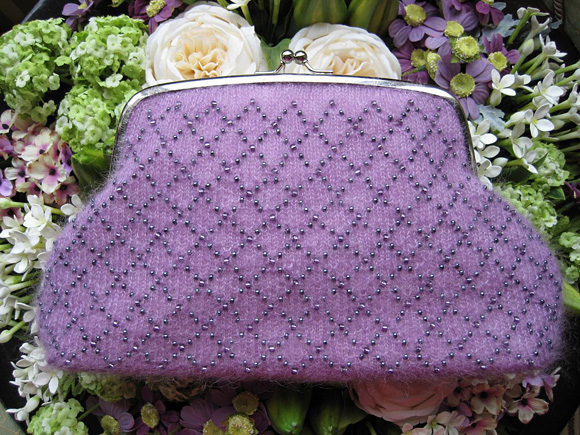
|
|||
| FINISHING | |||
Weave in the ends. Insert purse foundation into knitted shell, carefully matching and pinning edges and corners of opening. By hand, sew edges of foundation to edges of shell, approx. 1/8 inch from edge. Very carefully apply a small amount of glue to purse frame to edges of purse. Insert purse edges into frame. Allow to dry completely. |
|||
| ABOUT THE DESIGNER | |||
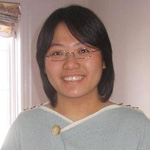 She blogs here. |
|||
| Pattern & images © 2009 Angela Sixian Wu. Contact Angela |

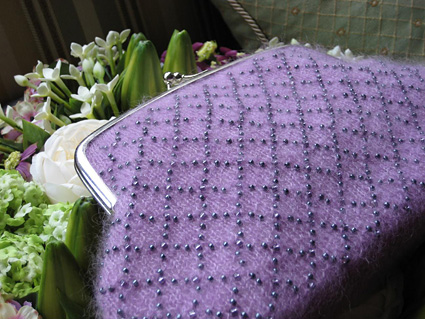
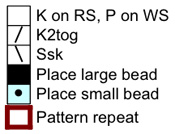
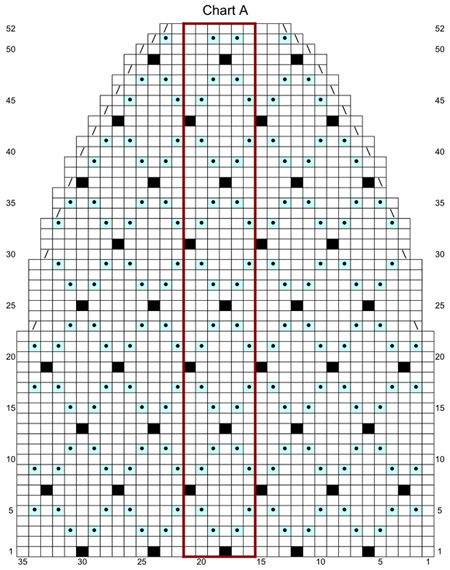 This purse has
four layers: a beaded knitted exterior shell, an ivory
silk dupioni underlining to show off the knitted fabric,
a heavy-weight sew-in interfacing to shape and support
the purse, and a pink silk dupioni lining for a clean
interior finish.
This purse has
four layers: a beaded knitted exterior shell, an ivory
silk dupioni underlining to show off the knitted fabric,
a heavy-weight sew-in interfacing to shape and support
the purse, and a pink silk dupioni lining for a clean
interior finish.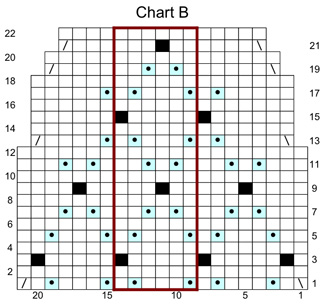 Step 1: Prepare Pattern and Cut Fabric
Step 1: Prepare Pattern and Cut Fabric